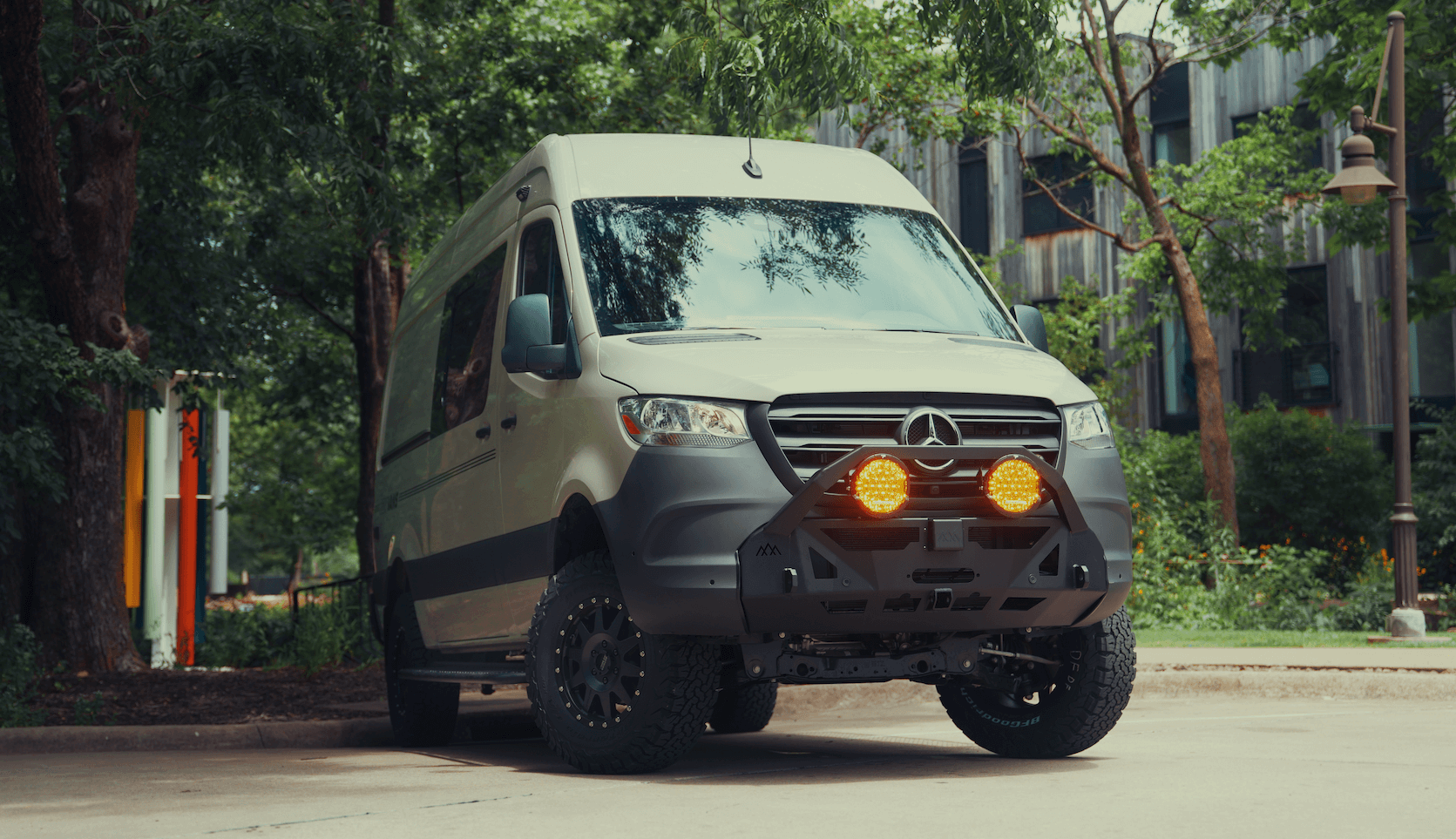Recreational Vans

Tire pressure is the quickest traction tool you control. Lower pressure grows the contact patch on dirt, gravel, or sand, helping the tread conform to uneven terrain. On pavement, correct pressure stabilizes sidewalls, sharpens steering response, and improves fuel economy. Onboard air for tires gives you the freedom to air down for trail grip and air back up for highway speed without waiting in line at a station.
Beyond traction, onboard inflation protects gear and passengers. The ability to fine tune pressure reduces impact harshness over washboard and potholes, easing stress on suspension and cargo. It also extends tire life by keeping heat in check and reducing uneven wear. For travel in remote areas or variable weather, a reliable compressor is as essential as recovery boards and a well stocked tool kit.
An onboard air system centers on a compressor. Most adventure rigs use a sealed 12 volt compressor mounted in a ventilated location. Flow matters more than peak marketing numbers, so compare CFM at realistic pressure like 30 to 40 psi. Duty cycle describes how long the compressor can run before it must cool. Higher duty cycle means longer continuous use without overheating.
An air tank adds reserve volume for faster bursts, seating beads, and powering small pneumatic tools. A pressure switch controls cut in and cut out, while a safety relief valve protects the system. Moisture is the enemy of reliable air delivery, so include a filter or water trap and drain the tank regularly. Quality hoses, quick connects, and a digital inflator with a bleeder valve make pressure changes quicker and more accurate.
Mount the compressor on a rigid plate with isolation bushings and ensure airflow around the head for cooling. Avoid trapping heat near exhaust components. Use the correct gauge primary wire, a dedicated fuse or breaker sized for the compressor, and short ground paths to clean metal. Protect looms with abrasion guards and route away from sharp edges or moving parts. Keep hoses coiled and accessible, ideally in a sealed cubby to keep dust out of chucks and gauges.
Moisture control matters in every climate. Tanks collect condensation from hot compressed air cooling in the reservoir. Install a low point drain and open it after trail days or rapid inflation sessions. In freezing weather, draining prevents ice blockage. Periodically check fittings for leaks with soapy water, then snug to spec. Replace O rings on chucks and quick connects when they dry or crack.
Two specs tell most of the story: CFM at 40 psi and duty cycle at rated temperature. A compressor with strong real world flow will reduce time per tire, especially on load range E sidewalls that swallow air. Duty cycle helps prevent thermal shutdowns mid fill. Consider the total electrical demand on your system. Larger compressors may draw 40 to 60 amps under load, so confirm alternator output and battery health.
Hose length affects convenience. A 25 foot hose usually reaches all corners on vans and trucks. If you use dual quick connects at front and rear, shorter hoses stay efficient and easier to stow. A four tire manifold can equalize pressure across all corners for hands free inflating or deflating, but single hose methods work fine with a fast compressor and a good routine.
As builds grow, onboard air connects to more than tires. It can power air springs, engage air lockers, or drive a small blow gun for dust cleanup. Planning for future add ons keeps wiring and plumbing clean from day one. Label lines and mount the pressure switch where it is easy to service. Reliable air is a convenience on pavement and a safety net off road.
For drivers who want a turn key solution on a new or existing rig, professional integration saves time and delivers clean packaging. OZK Customs designs onboard air to match tire size, use case, and electrical capacity, then mounts components where they stay cool, quiet, and easy to service. Explore our recreational vans, or start a tailored plan with our custom build van team. Shopping a finance friendly platform first is simple with our mainstream vans options.
Onboard air for tires turns pressure into performance and comfort on any surface. Get the flow, duty cycle, and wiring right, then add good hoses, chucks, and a reliable gauge. If you want it integrated into a van or overland build, we can design it around your travel style and tire package, from compact adventure vans to long range tourers.
Strong finishes start with smart planning. Share your route, tire size, and cargo needs, and we will propose a compressor, tank, and mount strategy that works from Fayetteville to your favorite trail network.
Contact OZK Customs to spec your onboard air with clean routing, proper power protection, and tested hardware. Your tires will feel the difference, and so will every mile afterward.
Ready to add onboard air to a custom van or overland build? Our team designs, wires, and installs complete systems that inflate fast, run cool, and integrate cleanly into your rig. Tell us how you travel, and we will spec the compressor, tank, and controls to match. Start your build now and roll out with confidence.
ADDRESS:
6159 E Huntsville Rd, Fayetteville, AR 72701
PHONE:
(479) 326-9200
EMAIL:
info@ozkvans.com